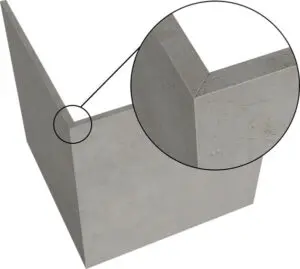Adding a fire pit not only brings a luxurious and modern feel to your outdoor space, but it can also function as a central focal point for entertaining, including providing a practical source for heat or table for eating.
But attractive and stylish designs aren’t the only factors that matter when choosing your fire pit. They are great sources of ambient lighting, warmth on colder evenings and often double as tables when you dine al fresco.
While there are many materials to choose from, lightweight concrete fire pits are particularly recommended for their durability, practicality and range of aesthetic designs. There are pros and cons when it comes to any material used for a fire pit, but overall, concrete is usually the preferred choice.
As well as material, you will need to take into consideration the fuel source for your fire pit. Most are fueled by either gas, burning wood or bioethanol.
Gas fire pits are currently the most popular choice. They are convenient, burn smoothly and cleanly as well as are easy to use and maintain. While with wood burning fire pits you need to constantly maintain the flames, with gas fire pits you get to sit, relax and simply enjoy your space.
If you want to install a gas fire pit in your outdoor space, there are two main options for fuel — liquid propane and natural gas. In this guide, we will look at each option in detail so you can choose the fuel source that is ideal for your space.
How Do Propane Fire Pits Work?
Propane fire pits require notably less time and work to install compared to natural gas fire pits. The quick installation process includes connecting a propane tank to the fire pit, making sure there are no leaks and then turning it on. Propane tanks for fire pits are often small as well as portable, which makes replacing old tanks simple. This also allows for an ease to relocating the fire pit if desired.
However, you do have another option when it comes to a propane fire pit. Running a permanent gas line underground using a hard line pipe (often referred to as an HLP) from the tank to the pit is also common, especially when tanks are larger. If you don’t plan to move its location, this option is best. Source
Source
Unfortunately, propane tanks can be a little unsightly. Thankfully, there are fire pit accessories available that conceal the tanks, keeping your aesthetic uninterrupted. Specifically, tank covers can both hide the tank and function as a side table accessory.
How Do Natural Gas Fire Pits Work?
Like propane, natural gas burns more smoothly and cleanly than wood, and it doesn’t produce smoke.
If you want your fire pit to be a permanent feature, you can connect your installed gas line to a propane tank or you can connect your gas line to your home’s natural gas source via a hard line pipe.
Natural gas has different advantages to propane as a fuel source, such as not needing to refill a tank with liquid propane. This means that natural gas can be cheaper in the long run, since you are not constantly purchasing additional fuel.
If you have gas at home, natural gas is a great option for a fuel source for your fire pit. Although the initial installation for gas is more involved and requires a professional for the actual install, the time saved by having a constant source of fuel can make this well worth it.
Let Dekko Help

Dekko’s handcrafted lightweight concrete fire pits are made of the highest quality proprietary concrete and feature match-light or electronic ignition burners that can be easily connected to a natural gas source. Our custom fire pits can be built according to your specifications.
Wherever you are located, Dekko can ship a luxurious and functional concrete fire pit directly to your door. We offer a large range of designs to choose from, so be sure to explore our collections and get in touch with any questions you may have so we can help elevate your outdoor space to a luxury oasis.

 Source
Source Source
Source Source
Source






Comments are closed.